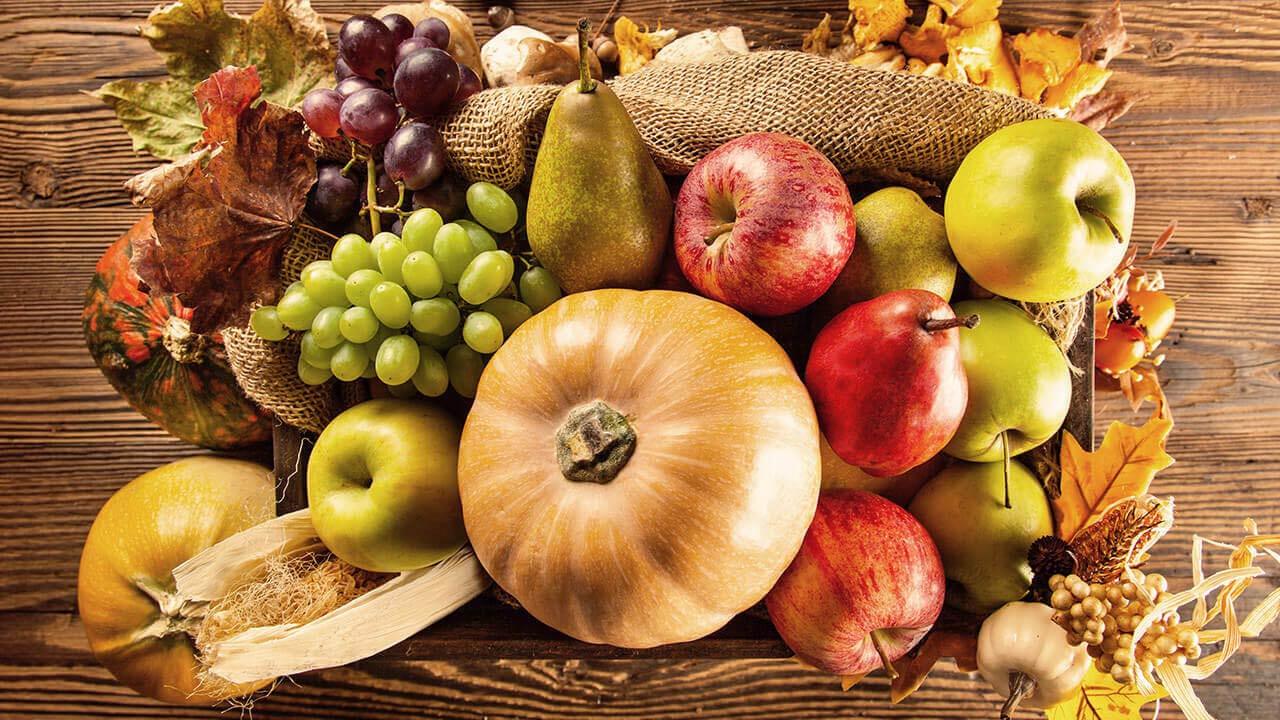Last year, I achieved an adult life goal and bought a house with my girlfriend. Since then, I have started to cook, and actually invest time into understanding how to eat properly, and adapt my recipes depending on the season.
In this Tier List, we'll rank the various fruits and vegetables found in Autumn, based on five criteria :
- How simple and convenient is it to prepare.
- How many recipes can we use that food for.
- Price
- Durability
- Do Kids typically enjoy this food.
All this food will be ranked in four tiers, from S to C. If an aliment checks every box, it will go in the higher Tier. Otherwise, it will go down one per category it isn't considered great in. At least, we know all of these are healthy, and recommended in Autumn, so feel free to also consider this as a checklist for good aliments to known about in the September to November period.
For reference, I am based in France, which might impact the recipes and prices compared to other places in the world. Feel free to share your best ingredients and why you love them so much in the comments !
Table of Contents
Autumn Fruits & Vegetables Tier List

Create and share your own tier lists.
Browse or create new tier list topics.
S Tier - Jack of all trades
- Beetroot
Great for our health through its mix of vitamins, minerals and potassium, Beetroots are great to preserve eyesight and solid cardio vascularity, on top of helping to regulate blood pressure and supporting liver detoxification.
Its juice is used by athletes to help boost the oxygen consumption of muscles, sort of a natural performance enhancing veggie.
For kids, simply make a purée out of it.
- Carrots
One of my favourite vegetables due to its flexibility, you can add carrots to a cold salad, a soup, or even smoke it alongside meat. It can also be dipped into humus for a healthy snack.
The beta-carotene in carrots supports glowing skin and eye health.
- Mushrooms
Just like Carrots, Mushrooms are very flexible whether you like them raw or cooked. Plus, they are great for immune health through their input in selenium and B vitamin.
Although many varieties can be expensive, there is always a cheaper variety available.
- Cucumber
The green Carrot as I like to call it, Cucumbers lose most of their nutrients when cooked, but will represent a great way to enjoy a dip. Plus, they help with hydration since they are made of 95% water.
Amongst green vegetables, this is one of the few kids tend to enjoy, as we can disguise its taste with a sauce very easily.
- Spinach
Very simple to cook in a pan, typically amongst the cheaper frozen vegetables at the store, the only thing that could get Spinach down the list are kids. Unfortunately for the young ones, we can include a bit of cheese, cream, or butter to make Spinach much more kids friendly, as long as they accept to taste it.
- Beans
Unless you don't like the taste, there is everything to love about beans during that time of year. Indeed, they can easily represent the foundation of a dish, on top of being protein-rich and heart-healthy.
Combine with grains (like rice) for a complete protein source
- Lentils
The foundation of multiple cuisines, lentils can represent the backbone of a diet thanks to being loaded with fiber and protein. Plus, they are excellent for stabilizing blood sugar
Then, except for the fact they have to cook for a while, there is really nothing negative about lentils.
- Pear
Almost as good as an Apple without the flexibility in terms of recipe, Pears remains of the best fruits in order to end a meal. Plus, they are delicious with a piece of dark chocolate.
- Apple
The go-to fruit for a ton of reasons. Apples are not expensive, very versatile in the kitchen, and often appreciated by kids without anything to do except slice it.
Great raw, baked, or cooked down into compote, Apple will always find their use in a kitchen, on top of supporting digestion and immunity.
- Grappe
As a frenchman, I had to rank Grappe in the top tier, but I also feel like it deserves it. Indeed, Grappe is great for our health, especially for people looking to fight cholesterol. Also, Red varieties contain resveratrol, beneficial for heart health
A Tier - Great food
- Avocado
A great source of vitamin and minerals, avocados are praised around the world as one of the best sources of healthy fat on the planet. However, it tends to be quite pricey and not very durable.
- Nuts (Peanuts, Walnuts…)
A fantastic snack on top of being simple to add to rice or in a salad. This family of aliments unfortunately cannot be ranked in the S tier due to their price, typically on the higher end of the spectrum for fruits and vegetables.
- Cabbage
Typically difficult to feed to kids, Cabbage is otherwise a great food to have in Autumn. Indeed, one isn't very expensive, can be chopped and stored into a Tupperware to serve as a side whenever you feel like it.
Great source of vitamin C and gut-friendly fiber.
- Squash
One of the most iconic Autumn vegetable, Squash are quite time demanding to cook, but otherwise full of benefits. Indeed, it can serve as a soup ingredient, in a purée, or even baked in the oven, depending on how you enjoy your beta-carotene and antioxidants.
- Zucchini
A cucumber we have to cook, Zucchinis go with a lot of different cooking styles and dishes due to blending well with meats, sauces, or grains. It is short of the highest tier due to being harder to disguise for kids.
- Fig
Figs would be in the highest tier if it wasn't for their price and short season. We can just eat a few for dessert, or have them alongside goat cheese, honey or mixed with tapenade. They are rich in fiber and calcium, perfect to help with digestion.
- Pomegranate
Fairly expensive compared to other fruits, Pomegranate otherwise shines through its flexibility and anti-inflammatory properties. The fruit can be used in salads, as a dessert, or even be mixed into purées in order to bring a bit of an acid kick to it.
- Kiwi
Held back due to its price, like most fruits unfortunately, the Kiwi is another great way to get some vitamins in Autumn. Plus, this is another fruit we can use both as a starter or to end a meal.
- Sweet Potato
Except for the time required to prepare them, sweet potatoes are both flexible and nutritive, although on the fatter side of the spectrum. Plus, on the contrary to rice or pasta, you can always prepare a bit of extra fries to snack onto later.
- Potato
A better way to stock on carbohydrates compared to pasta, Potatoes can't be considered a vegetable in our plate. Then, we should consider this as a way to get a source of energy more than a vegetable when building our diet.
- Garlic
Beyond flavor, garlic is a genuine superfood with anti-inflammatory properties and full of magnesium and calcium. The best seasoning around from a nutrition standpoint due to its natural antimicrobial properties.
- Oranges
A great source of vitamin, but also mostly made of sugar, Oranges are a great way to kick-start our metabolism early in a day. However, there are better fruits to eat later in a day, and also much easier to snack on.
- Plum
From a nutrition standpoint, Plums are typically considered worse than most fruits, mostly because they contain a lot of sugar for fewer vitamins. However, it is extremely simple to carry some around for a snack, while they can calm that sugar rush without actually eating the bad kind of sugar.
B Tier - Solid when prepared.
- Swiss Chard (Blette)
Great from a nutritive standpoint, the Swiss Chard isn't the easiest food to prepare nor get into a kid's stomach. Indeed, while the entire vegetable can be eaten, we have to separate the leaf from the stems as they need different cooking times.
- Brocoli
Kids typically don't like whatever is green, especially when combined with a rather bitter taste. Plus, raw broccoli isn't really tasteful, meaning we are forced to cook it. As such, although it is a great vegetable to add to many dishes (rice, ramen, pasta…) while being an affordable option, broccoli isn't the most flexible food to work with.
- Chestnut
In this tier due to its high price compared to the average fruit alongside the need to be cooked properly, chestnuts are a fantastic way to complement a tea or hot chocolate during rainy days. Plus, kids tend to absolutely love them.
- Chicory
Must be cooked, and typically alongside a sauce and some ham for kids to accept eating it. Its bitter taste makes Chicory harder to include in recipes than most vegetables on this list.
- Fennel
Very enjoyable raw with a bit of oil, cheese and black olives, or cooked with some soy sauce, Fennel isn't the most appealing of vegetables. Indeed, there isn't that many recipes using it, kids aren't particularly enjoying it, and it tends to be a bit more expensive than your average vegetable.
- Lamb's lettuce
Typically on the expensive side of the spectrum when it comes to lettuce, the Lamb's kind is also not very durable. However, it is a great, quite neutral in taste foundation for any salad you might fancy.
- Leek
A great ingredient for quiches, soups, and other preparations, there is almost always the need for some preparation with a Leek. Combined with the relatively low amount of nutrients compared to other vegetables on this list, the main upside for the Leek is its price.
It is rich in prebiotics for gut health.
C Tier - Expensive Niche
- Turnip
Price and durability are quite good, on par with most vegetables, likes Carrots or Beetroots. However, compared to the other entries on this list, the turnip almost feels like a vegetable of an ancient time. Indeed, except for soups, turnips aren't commonly used, while they are mostly water from a nutrition standpoint.
- Onion
A great ingredient to add some depth or taste to a dish, the Onion is otherwise not a particularly great aliment. Then, although it checks the box for price, durability and flexibility, the Onion is ranked in the lowest tier as it is mostly used for taste rather than nutrition.

